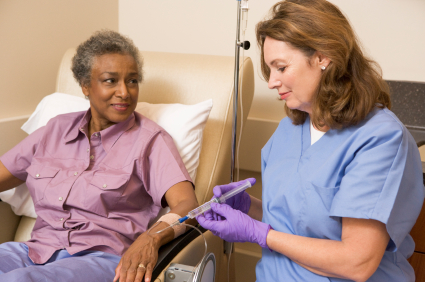Pilot Study of Pramipexole for Anhedonia Symptoms in Unipolar Depression

At a recent scientific meeting, researcher Laura Hack described an open-label pilot study of pramipexole in participants with major depression including anhedonia, or inability to feel pleasure. Five participants with prominent anhedonia and major depression completed eight weeks of treatment with pramipexole, which activates dopamine D2 and D3 receptors. Four of the five who completed the study saw notable improvements in their anhedonia and quality of life.
The starting daily dose was 0.26 mg, which was increased every three days to a target dose of 2.0 mg per day. Two additional patients dropped out due to side effects (nausea, poor sleep, and headache).
Low activity in the ventral striatum, a part of the brain associated with decision-making and implicated in the brain’s reward system, correlated with the severity of the patients’ anhedonia. These results suggest that further studies are warranted.
Pramipexole has also shown positive effects in two small studies in bipolar depression. The drug is currently approved by the US Food and Drug Administration for the treatment of Parkinson’s disease and also works in restless legs syndrome.
A Novel Drug Shows Promise in the Treatment of Negative Symptoms of Schizophrenia

At a recent scientific meeting, Kenneth Koblan, Chief Scientific Officer at Sunovion Pharmaceuticals, Inc. reported on a new drug in development, SEP-363856, and its effects on negative symptoms of schizophrenia.
In both a 4-week double-blind study of participants with acute schizophrenia and in an open (non-blind) 6-month extension study, SEP-363856 was effective on negative symptoms. In the placebo-controlled acute study, those randomized to 50mg or 75mg of the drug showed improvement of moderate effect size in the following symptoms: blunted affect, avolition, anhedonia, asociality, and alogia. In the extension study, which consisted of 26 weeks of treatment with flexible doses (25/50/75 mg/day) of SEP-365846, patients improved further on multiple scales measuring negative symptoms.
SEP-363856 is a novel trace amine receptor 1 (TAAR1) agonist with serotonin 5-HT1A activity. Koblan and colleagues concluded, “These results suggest that activation of the TAAR1 receptor by SEP-363856, in the absence of D2 receptor blockade, may represent a promising approach to the treatment of negative symptoms in schizophrenia.”
Pimavanserin Prevents Relapse in Patients with Dementia-Related Psychosis

At a recent scientific meeting, Erin Foff of Acadia Pharmaceuticals Inc. described a study of pimavanserin (a selective serotonin inverse agonist/antagonist at 5-HT2A receptors) in dementia-related psychosis. Pimavanserin is currently approved in the United States for the treatment of hallucinations and delusions associated with Parkinson’s disease (PD). There is currently no Food and Drug Administration–approved treatment for dementia-related psychosis.
Enrolled patients had moderate-to-severe psychosis associated with Alzheimer’s disease, Parkinson’s, dementia with Lewy bodies, vascular dementia, or frontotemporal dementia. After a 12-week open label phase with flexible dosing and a target dosage of 34mg/day, 217 of the participants with a good response to pimavanserin were then randomized to continue pimavanserin or switch to placebo. The study was stopped early when a prespecified interim analysis revealed that pimavanserin was clearly superior to placebo. There was a more than 2.8-fold reduction in risk of relapse with pimavanserin compared to placebo in the double-blind period. Those on higher doses of 34mg/day showed a more than 3.4-fold reduced risk of relapse. Acadia will seek FDA approval for pimavanserin for the treatment of dementia-related psychosis.
Lumateperone Improves Bipolar Depression Symptoms

At a recent scientific meeting, Suresh Durgam of Intra-Cellular Therapies, Inc. reported on a study of lumateperone tosylate for the treatment of bipolar depression. Lumateperone tosylate is a mechanistically novel antipsychotic that has been approved by the US Food and Drug Administration for the treatment of schizophrenia.
In a double-blind, placebo-controlled study, the drug showed efficacy in bipolar I and II depression. In a 6-week study, 377 patients received either 42 mg/day of lumateperone or placebo, and 333 (87.4%) completed treatment. Lumateperone treatment significantly improved total scores on the Montgomery Asberg Depression Rating Scale (MADRS) compared with placebo. Item analysis revealed that 8 of 10 MADRS items improved significantly in comparison with placebo by day 29, and all items did by day 43. The largest effects were in reported sadness, apparent sadness, inner tension and reduced sleep. Durgam and colleagues concluded that lumateperone at a dose of 42mg improves a broad range of symptoms in bipolar I and bipolar II depression.
Increased Oxygen Improves Depression

At a recent scientific meeting, researcher R. Haim Belmaker reported that giving mildly to moderately depressed adults a nasal tube that delivers extra oxygen overnight for four weeks produced dramatic antidepressant effects. A total of 55 participants aged 18–65 years old were randomized to receive either normal room air (made up of about 21% oxygen), or hyperoxia (air containing about 35% oxygen). There was greater improvement on several different depression rating scales, including the Hamilton Depression Rating Scale, the Clinical Global Impression Scale, and the Sheehan Disability Scale, among those who received hyperoxia than among those who received normal air.
According to Belmaker, 69% of the patients who were treated with oxygen-enriched air improved on the CGI scale, compared to only 23% patients who were treated with room air. Limitations of the study were its small sample size and the lack of a clear biological mechanism for the effects of increased oxygen.
Childhood Physical Abuse Predicts Response to IV Ketamine

At a recent scientific meeting, researcher Alan Swann reported the results of a study of intravenous ketamine in people with treatment-resistant depression. The 385 participants, who received four infusions of IV ketamine at a dosage of 0.5 mg/kg, could be grouped into three based on their type of response to the treatment.
One group had moderate depression at baseline and showed little change. A second group with severe baseline depression also showed minimal improvement. A third group who also had severe baseline depression had a rapid and robust antidepressant response to the treatment. This group had high scores relating to physical abuse on the Childhood Trauma Questionnaire (CTQ), but did not differ on other clinical variables. Swann and colleagues concluded, “Our outcomes show that IV ketamine should be considered as a primary treatment option for adults presenting with severe, treatment resistant depression and a self-reported history of childhood physical abuse. IV ketamine may not be as effective for moderately depressed individuals irrespective of childhood maltreatment.”
Sunovion Drug in Development Targets 5HT7 and D2 Receptors to Treat Bipolar Depression

At a recent meeting, President and CEO of Sunovion Pharmaceuticals Antony Loebel presented the results of a recent double-blind, placebo controlled study of a drug in development for the treatment of bipolar depression, currently known as SEP-4199. The drug has a fixed ratio of 85% aramisulpride and 15% esamisulpride that target serotonin 5-HT7 receptors and dopamine D2 receptors, respectively. The drug was optimized to amplify the antidepressant effects that come from affecting 5-HT7 while minimizing D2-related side effects.
A total of 344 patients were randomized into three equal groups, in which patients received placebo or a fixed dose of SEP-4199, either 200mg/day or 400mg/day.
The results were promising. After 6 weeks, scores on the Montgomery Asberg Depression Rating Scale (MADRS) were higher among patients who received SEP-4199. The results were very close to statistical significance (p=0.054), with the placebo group showing a large improvement that may have contributed to the lack of difference across groups. In each dosage group, there was greater improvement in MADRS scores than was seen in the placebo group. There was also greater improvement on the Quick Inventory of Depression Symptomatology (QIDS-SR-16) and on the Hamilton Anxiety Rating Scale (HAM-A) in each dosage group compared to placebo.
Loebel concluded that the results showed proof of concept for the use of SEP-4199 to treat bipolar depression, and they plan to continue their research on the drug.
No Association of Benzodiazepines, Z Drugs and Other Anxiolytics with Dementia

Benzodiazepines, so-called Z-drugs (such as zolpidem, zopiclone, and zaleplon), and other anxiolytics are commonly prescribed drugs that have some cognitive side effects. For this reason, there has been concern that the drugs may increase risk of dementia, and small studies had suggested that this might be the case. However, a new large study found no subsequent dementia risk after taking these drugs.
In a 2020 article in the American Journal of Psychiatry, researchers Merete Osler and Martin Balslev Jørgensen described a cohort and nested case-control study of 235,465 adult patients in Denmark in which they found no association of benzodiazepines, Z-drugs, or other anxiolytics with a subsequent diagnosis of dementia. Participants were patients over the age of 20 who were hospitalized for an affective disorder. Of these, 75.9% had been prescribed one of the drugs in question, and 4.2% went on to be diagnosed with dementia.
While participants in this study who had the lowest use of benzodiazepines or Z drugs showed a minimal increased risk of dementia compared to those who took none of these drugs, those who had the highest use of benzodiazepines and Z drugs actually had the lowest incidence of dementia in the study.
The previous studies may have been “confounded by indication” meaning they did not take the underlying psychiatric condition for which the drugs were prescribed into account.
Characteristics of Youth with Bipolar Spectrum Disorders

In a 2020 article in the Journal of Child and Adolescent Psychopharmacology, researcher Gonzalo Salazar de Pablo and colleagues described characteristics of youth with three different bipolar spectrum disorders: bipolar I disorder, bipolar disorder not otherwise specified (NOS) and mood disorder (MD) not otherwise specified. The participants were hospitalized adolescents aged 12–18 years, who were highly impaired with hallucinations, delusions, incoherence, or inability to function.
Mania (especially irritability) and depressive symptoms were common in all three groups.
Many of the youths had comorbid conditions. Approximately 40% of each diagnosis group had an anxiety disorder. Attention deficit hyperactivity disorder (ADHD) was seen in 29.2% of those with bipolar I disorder, 34.5% of those with bipolar NOS, and 43.5% of those with mood disorder NOS. Oppositional defiant disorder was seen in just over 20% of those with bipolar I or bipolar NOS, and just over 30% of those with mood disorder NOS. Substance use disorders were seen in 8.3% of those with bipolar I and about 21% of those with bipolar NOS or mood disorder NOS. Many of the participants had moderate to severe suicidality.
The median delay before the adolescents received treatment for their moderate to severe symptoms was 21 to 25 weeks. After discharge from the hospital, the adolescents with bipolar I, bipolar NOS, and mood disorder NOS were typically treated with atypical antipsychotics (79.2%, 62.1%, and 56.5%, respectively), mood stabilizers (66.7%, 31.0%, and 34.8%), and lithium (58.3%, 20.7%, 30.4%), with greater use of mood stabilizers and lithium than on admission and less use of antidepressants. Few children were on ADHD medications on admission, and even fewer (4-9%) on discharge.
The authors conclude: “Youth with BD-I, BD-NOS, and MD-NOS experience considerable symptomatology and are functionally impaired, with few differences observed in psychiatric comorbidity and clinical severity. Moreover, youth with BD-NOS and MD-NOS undergo a [long] period with subthreshold manic symptoms, enabling identification and, possibly, preventive intervention of those at risk for developing [bipolar disorder] or other affective episodes requiring hospitalization.”
Editor’s Note: These findings replicate many others in the field indicating that children with bipolar spectrum disorders, even those with symptoms short of a full-blown bipolar I diagnosis, are highly impaired with multiple comorbidities and high levels of suicidality and other dangerous symptoms. These patients deserve systematic pharmacological intervention based on an extensive clinical treatment literature.
The only thing the authors failed to address is that not only does no such clinical treatment literature exist, but there does not seem to be any recognition by the National Institute of Mental Health and other funding bodies that a series of treatment-oriented studies in children and adolescents is urgently needed.
The 2010 epidemiological studies of Kathleen Merikangas and colleagues indicate that 2.2% of adolescents have a bipolar spectrum diagnosis and that 80% of those young people are not in any kind of treatment. This is in part driven by a lack of consensus about appropriate treatment. The magnitude and seriousness of this illness creating lifelong problems, disability, cognitive impairment, and the loss of more than a decade of life expectancy is a public health catastrophe.
In the 1980s, AIDS protesters had to raise awareness, protest, and clamor for treatment studies in a highly confrontational manner before AIDS research was appropriate funded. Anthony Fauci, Director of the National Institute of Allergy and Infectious Disease since 1984, has said he was finally convinced that the AIDS protestors were correct, and he then joined forces with them to foster and accelerate treatment studies. The prognosis for AIDS changed from certain death in the 1980s to a manageable illness today.
We need leaders to demand attention to the lack of studies in bipolar disorder at a threshold that cannot be ignored by leaders of the NIMH. Patient advocacy groups must push the NIMH to fund treatment studies for bipolar disorder. It is clear that without some new form of pressure, the NIMH will fail in its stated mission to help make the lives of those with serious mental illness less grave. The current generation and many in the future generations of patients with bipolar disorder will otherwise face disaster.
Lurasidone Effective Long-Term in Pediatric Bipolar Depression

At the 2020 meeting of the American Society of Clinical Psychopharmacology, researcher Manpreet Singh presented data showing that children aged 10–17 with bipolar depression had an excellent long-term response to the antipsychotic medication lurasidone (trade name Latuda).
Lurasidone has been approved by the US Food and Drug Administration as a monotherapy treatment of bipolar depression in children and adolescents since 2018. Following a six-week double-blind study comparing lurasidone with placebo in 305 children and adolescents, Singh and colleagues carried out an open-label extension study in which all of the young participants, including those in the placebo group, had the option of taking lurasidone for up to two more years.
Of those, 195 children completed one year of treatment, and 93 completed two years of treatment. Rates of response were 51.0% after the six-week preliminary study; 88.4% at one year; and 91.1% at two years. Rates of remission were 24.3% after the six-week study; 61.3% at one year, and 75.6% at two years, while rates of recovery were 17.7% after the preliminary study; 53.8% at one year; and 73.8% at two years.
This improvement in depression had a strong correlation with improvement in functioning, as measured by the Children’s Global Assessment score (CGAS). The results show progressive increases in rates of response, remission, and recovery with duration of treatment that are associated with improvement in functioning.

